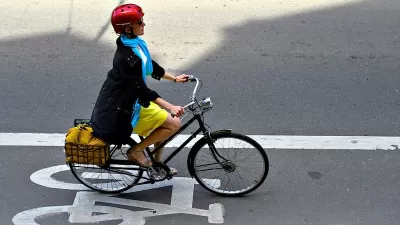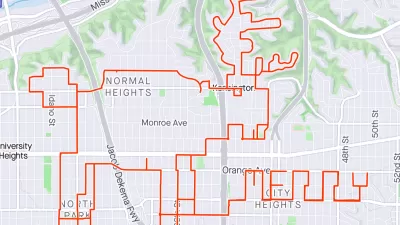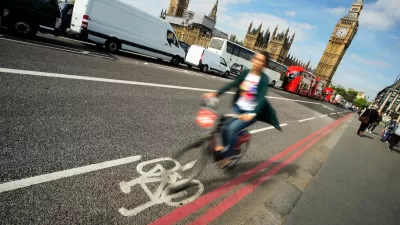In his new book, James Longhurst asks: "Why are most American cities still so ill-prepared to handle cyclists?"

The history professor answers questions during a recent stop on his book tour to promote Bike Battles: A History of Sharing the American Road.
The road is a shared resource. "It’s easy to forget it’s shared between many different users, and that’s the only way the public road had really existed for millennia before one user type became more successful than others."
He uses a model of path dependency to analyze policy. "Cities are the debris fields of history. They’re the leftover physical monuments of decisions that were made and not made in the past." This model offers us the freedom to politically evolve. "[Decisions] may be poured in concrete, but they’re not set in stone."
He touches upon the history of Golden Ages for bicycles in the United States, but notes that the current bike boom is more than a fad because the economics of transportation has fundamentally changed. "Even as gas prices come down, we can’t afford the infrastructure for cars. It doesn’t get cheaper the more of it we build."
Longhurst believes that a change in the perception of who uses bicycles is critically important to changing the politics around bicycling. "If you can make the user group mainstream, so people in cars look at them and think ‘that’s us,’ then voters and taxpayers will see the users simply as the public."
FULL STORY: Bike Battles: Why We Debate Who Owns the Road

Pennsylvania Mall Conversion Bill Passes House
If passed, the bill would promote the adaptive reuse of defunct commercial buildings.

Coming Soon to Ohio: The Largest Agrivoltaic Farm in the US
The ambitious 6,000-acre project will combine an 800-watt solar farm with crop and livestock production.

World's Largest Wildlife Overpass In the Works in Los Angeles County
Caltrans will soon close half of the 101 Freeway in order to continue construction of the Wallis Annenberg Wildlife Crossing near Agoura Hills in Los Angeles County.

California Grid Runs on 100% Renewable Energy for Over 9 Hours
The state’s energy grid was entirely powered by clean energy for some portion of the day on 37 out of the last 45 days.

New Forecasting Tool Aims to Reduce Heat-Related Deaths
Two federal agencies launched a new, easy-to-use, color-coded heat warning system that combines meteorological and medical risk factors.

AI Traffic Management Comes to Dallas-Fort Worth
Several Texas cities are using an AI-powered platform called NoTraffic to help manage traffic signals to increase safety and improve traffic flow.
City of Costa Mesa
Licking County
Barrett Planning Group LLC
HUD's Office of Policy Development and Research
Mpact Transit + Community
HUD's Office of Policy Development and Research
Tufts University, Department of Urban and Environmental Policy & Planning
City of Universal City TX
ULI Northwest Arkansas
Urban Design for Planners 1: Software Tools
This six-course series explores essential urban design concepts using open source software and equips planners with the tools they need to participate fully in the urban design process.
Planning for Universal Design
Learn the tools for implementing Universal Design in planning regulations.


























